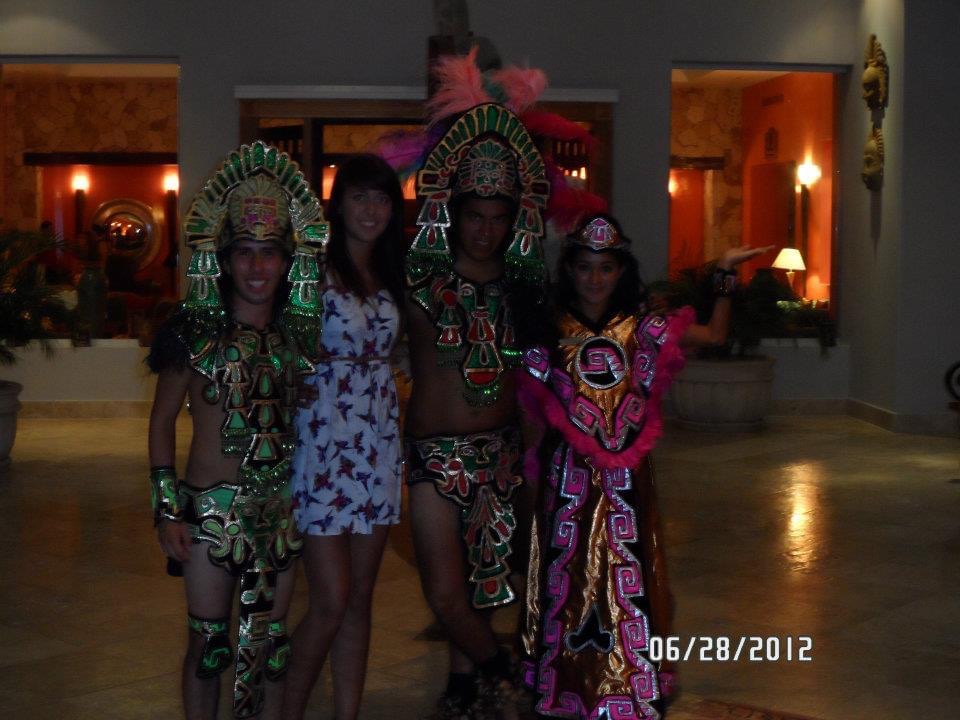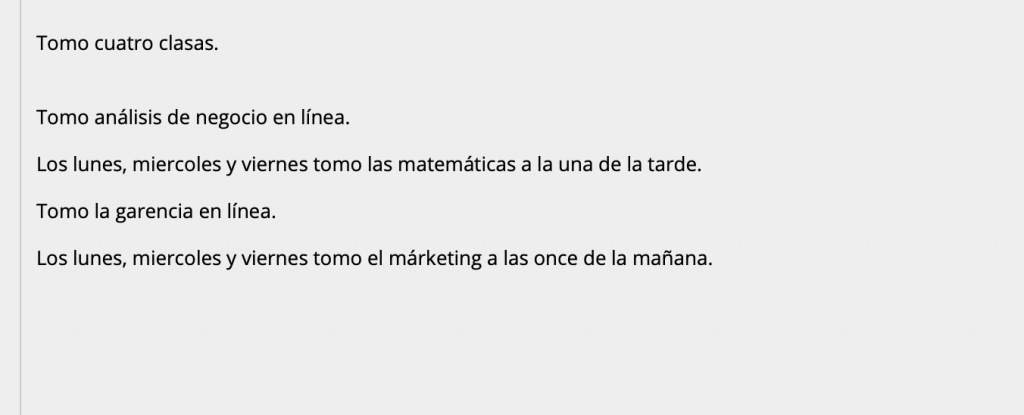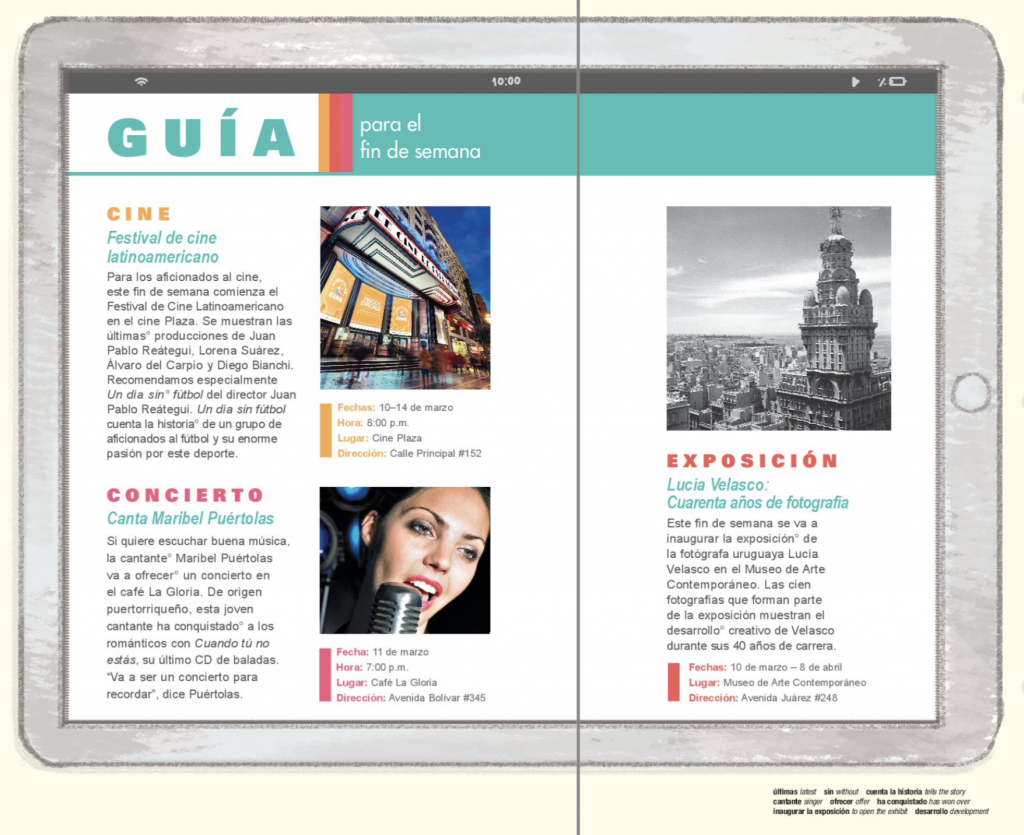Interpretive, Interpersonal, and Presentational Modes of Communication
Exploring Culture
The biggest thing for me in understanding other cultural perspectives is keeping an open mind. When I first moved to Japan, it was a big culture shock for me. But the more I got to know the culture, the more I was able to appreciate it. Learning another language is a great way to gain perspective because it allows you to be more understanding. Another way is to take the time to learn and understand the history of different cultures. Just as we have our own past and experiences that shape who we are, the same can be said for different cultures.
These practices definitely allowed me to better understand the values and attitudes in the Hispanic culture, even throughout this course. I often talk to my best friend who is Hispanic about the differences in our families and how we were raised. The Flash Cultura videos we watched throughout the semester also offered cultural perspectives that I never considered before. I do not think I had any preconceived stereotypes before this course, but I definitely learned some new things about the culture. For example, I learned that Argentinians kiss each other on the cheek when greeting each other, which is pretty different from the American way of shaking hands.
Engaging in Communities

It is very important to engage in your immediate community as well as your global community. It allows for the adoption of new perspectives and as well as better understanding of others. It can also improve problems solving, and integrate people of different backgrounds. Getting to know other cultures makes you realize that there is more than one way of thinking and that no way is better. It lets you be more open and tolerant of others as well.
Interpersonal Communication
Our discussion board posts allowed for some interpersonal communication between classmates. One discussion board required us to write about our classes, and then we had to respond to classmates about what classes we may of had in common with them. Another required us to draw pictures of nouns and respond to classmates with what those nouns were in Spanish. We also did breakout rooms in our Zoom meetings which allowed us to talk to our classmates verbally.
These interpersonal communication activities allowed to communicate with classmates using Spanish. The discussion boards allowed us to respond to classmates. The breakout rooms gave us a chance to have back and forth discussion which was very helpful with learning Spanish because the listening and speaking roles are exchanged back and forth. In the back and forth conversation, it is more unplanned and you’re not sure what the other person is going to say which really helps with listening and interpretive skills.

Presentational Speaking
During the semester, we did an interview with a classmate talking about our various things such as our classes or hobbies. We also completed an interview with our professor where we spoke about our families. Each interview came with it’s own challenges, but the interview with my professor was more difficult because I was unsure of what the questions would be. During the interview with my classmate, we were able to practice and we had an idea of what we were going to say. The interview with my professor really challenged my understanding of Spanish and how to respond to questions appropriately. I think I did a good job at my pronunciation, but I struggle with the listening and interpreting part of Spanish so that is something I can definitely improve on.
Presentational Writing
For our presentational writing, we completed two composition assignments. In the first composition, we wrote about ourselves and our individual class schedules. In the second composition, we wrote about our families. I think my second composition was a lot better than my first one, as it was more in depth and I felt a lot more comfortable constructing sentences in Spanish. I also felt like it flowed a lot better than the first one, because I was able to talk about each family member rather than just list things. My first composition had some errors with conjugations, but I improved on that in the second composition. With the second composition, I tried not to use any outside sources to help me write it and I think that really helped me grow in my writing.
composition-2-final-draftInterpretive Listening
On VHL, we did various listening activities. One of them involved listening to a conversation between two people and writing down what we hear. Another activity involved listening to a conversation and deciding if it was logical or not. This was challenging, because the speaker often spoke fast and I would have to repeat the recording to understand what was said. We also watched videos that required active listening, and then we would answer questions about the video. My takeaway from the listening experience was just repetition and thinking about the words that are said and how they go together. My listening skills definitely improved throughout the semester as my Spanish vocabulary expanded and I practiced.
Interpretive Reading
Our Lectura assignments required interpretive communication, as well as our readings from the text. For example, we read an article from a Mexico City newspaper and answered questions about what we read.
I think the challenging part of this assignment was some of the unfamiliar vocabulary throughout, but overall I felt confident in answering the questions. I think some of the questions were tricky such as the one that asked about how many photos are in the Museo de Arte, for example. The number 40 is used twice in the paragraph but that’s only referring to the number of years the artist has been creating artwork, but when I looked closer I realized it states that there are 100 photos. My takeaway from the reading was to read the paragraphs thoroughly and not just look for key words. Each Lectura assignment definitely helped my Spanish because it required me to read carefully.
